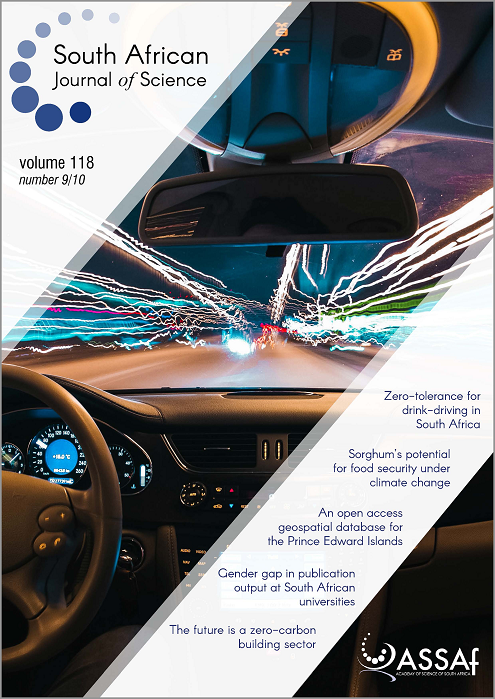The future is a zero-carbon building sector: Perspectives from Durban, South Africa
DOI:
https://doi.org/10.17159/sajs.2022/11767Keywords:
net-zero, zero emissions, climate change, greenhouse gases, climate actionAbstract
The built environment is a critical part of the climate change problem in cities, and urban buildings can act as a scaled response to mitigating anthropogenic climate change. Buildings last for well beyond a hundred years and thus have the potential to provide cities with a healthier and safer environment for urban dwellers well into the future. The role of the building sector toward reducing greenhouse gas (GHG) emissions is now better understood, and has resulted in various initiatives globally to move toward being a net-zero carbon sector. The objective of this study was to provide an assessment of the costs in achieving the emissions-reduction potential for each high-emitting sector in the eThekwini Municipality (KwaZulu-Natal, South Africa) through the determination of a marginal abatement cost curve (MACC). The MACC was developed for 2030, 2040, and 2050 across key sectors and aligned with the approach used by the eThekwini Municipality by employing the GHG Protocol’s BASIC level of reporting that excludes the Agriculture, Forestry, and Other Land-use (AFLOU) and Industrial Processes and Product Use (IPPU) sectors. We found that the building sector offers the lowest cost to mitigate each tonne of GHGs when compared to other sectors in the eThekwini Municipality. Several interventions within the building sector further display positive payback periods throughout its life cycle. The MACC produced in this study is the first of its kind for any municipality in South Africa and will provide insights into the net cost of interventions that would mitigate a tonne of carbon emissions.
Significance:
- The MACC produced in this study is the first of its kind for any municipality in South Africa. Developing a MACC adds to an important basket of factors that need to be considered when planning for future climates in cities and is of benefit in prioritising actions in addressing climate change. The MACC in this study demonstrates that energy efficiency interventions in the building sector offer substantial mitigation potential within the most feasible payback periods when compared to other sectors.
- The MACC may be replicated by other municipalities, to support the prioritisation of actions needed to address climate change.
Downloads
Published
Issue
Section
License

All articles are published under a Creative Commons Attribution 4.0 International Licence
Copyright is retained by the authors. Readers are welcome to reproduce, share and adapt the content without permission provided the source is attributed.
Disclaimer: The publisher and editors accept no responsibility for statements made by the authors
How to Cite
- Abstract 526
- PDF 675
- EPUB 313
- XML 210
- Supplementary material 115













.png)